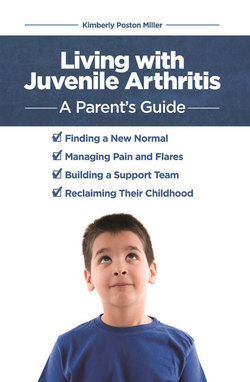Читать книгу Living with Juvenile Arthritis - Kimberly Poston Miller - Страница 6
На сайте Литреса книга снята с продажи.
ОглавлениеForeword
These days, whenever I turn on the TV or pick up a newspaper, there’s a story about “autoimmunity” or “autoimmune disease.” But that was not always the case. When I founded the American Autoimmune Related Diseases Association, Inc. (AARDA) back in 1990, these terms were not part of the public dialogue.
Juvenile arthritis (JA) is one of the many autoimmune conditions that are increasing at a rapid rate. Often misunderstood as an “older person’s” affliction, or just aches and pains, the general public doesn’t always understand that this disease is an autoimmune condition that can affect children from infants to teens.
Whether juvenile arthritis, multiple sclerosis, celiac disease, psoriasis, type 1 diabetes, or Graves’ disease, the pathology is the same—a malfunctioning immune system. When you’re healthy, your immune system creates an army of antibodies that fight off foreign invaders such as viruses and bacteria. When you have an autoimmune disease (AD), your immune system creates the same kind of army, only it mistakenly recognizes healthy tissue and organs as foreign invaders and attacks them, producing disease.
Autoimmune diseases, whether rheumatic, dermatologic, or endocrine, share a genetic background so they tend to run in families. They also cluster in individual patients. Thus, it is not uncommon for patients to have multiple ADs. Of the more than 50 million Americans who live and cope with these diseases, many of them are children. Today, roughly 100 ADs have been identified. Together, they are responsible for more than $100 billion in direct healthcare costs annually.
I’ve heard it said AD is not common in children. Our experience at AARDA has been quite the opposite. Over the years, we’ve heard from many parents with children who have been diagnosed with ADs. The problem is there haven’t been many epidemiological studies on ADs in children (or adults, for that matter), so there is no accurate tracking of the numbers of kids actually affected. Like adults with ADs, getting a proper diagnosis for a child with an AD can be a frustrating and lengthy process that takes years with many visits to various specialists.
Parents of children with ADs also face a unique set of challenges and frustrations. I would say the biggest challenge is overseeing and coordinating their care because, ultimately, this responsibility lies with the parents. Children, like adults, often have multiple ADs. For example, a child with lupus (a condition under the juvenile arthritis umbrella) may also have type 1 diabetes. The rheumatologist treating the lupus may want to put the child on steroids, which is not as desirable to the endocrinologist treating the diabetes, since steroids can affect blood sugar levels. It is then up to the parents to make the decision and resolve this treatment conflict. And it’s not an easy choice.
Making decisions about the new therapies available to treat ADs such as JA is also a challenge. Many of these therapies have not yet been tested in children. They may have a high benefit, but they also come with some degree of risk. Again, something parents must weigh and then decide.
Frustration is also part of the equation. I’ve talked to parents whose children have Crohn’s disease, for example, who are at their wit’s end because the child’s teachers don’t seem to realize the urgency and potential embarrassment involved with this disease. When a child raises his or her hand and says they need to use the bathroom, they mean they need to use the bathroom now. If this happens repeatedly throughout the day, and if the teacher remarks on it, the class can become involved and the ridicule can start. It’s a very unfortunate situation.
I raise my glass to the parents who find themselves raising a child with juvenile arthritis or any other autoimmune disease. It is a difficult task, there are no clear cut directions to follow, and no one “right” way to proceed. It can be overwhelming, at best.
Living with Juvenile Arthritis: A Parent’s Guide helps families find their way through this uncharted territory, with solid advice from families who have been there. From actual disease management to ancillary lifestyle changes and situational advice unique to childhood, Kimberly Poston Miller’s book will not disappoint parents who are looking for guidance on managing more than the medical portion of their child’s disease; it is a guide to healing the whole child and learning to live, and even thrive, under these difficult circumstances.
Virginia T. Ladd
Founder and President
American Autoimmune Related Diseases Association
